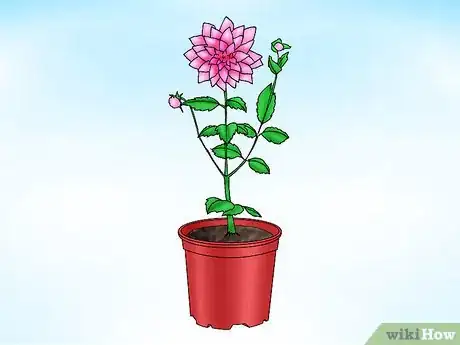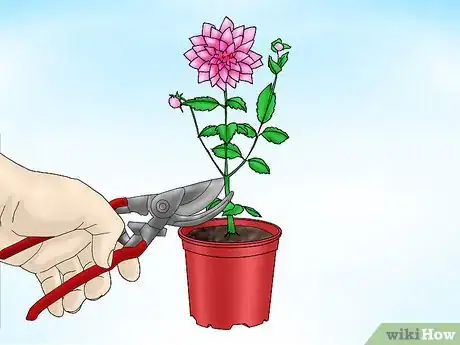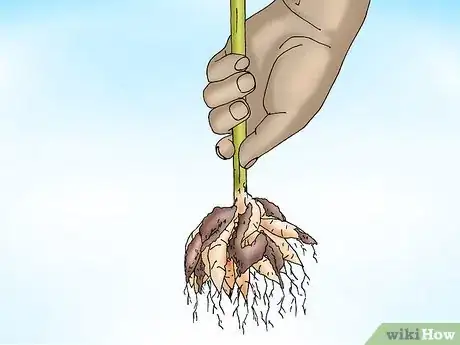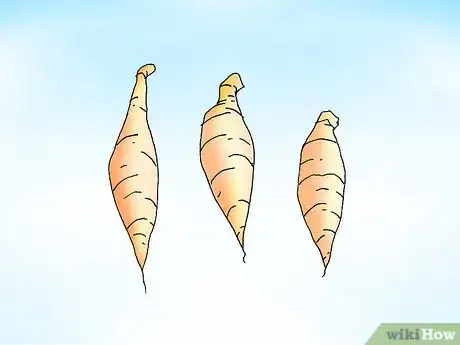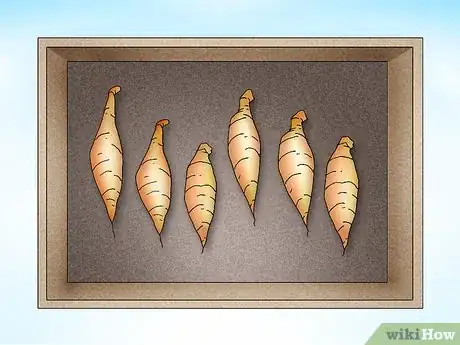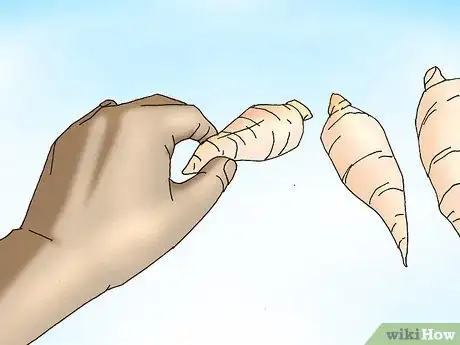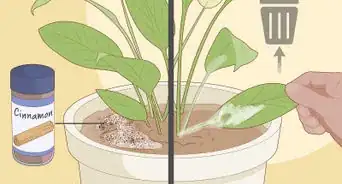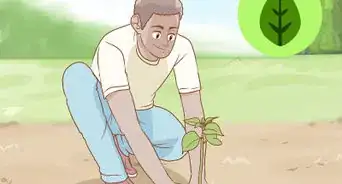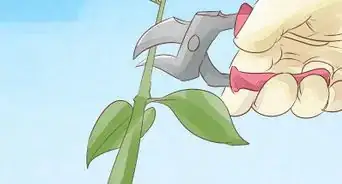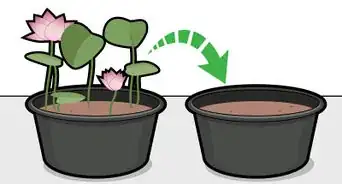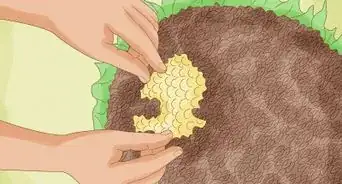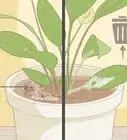wikiHow is a “wiki,” similar to Wikipedia, which means that many of our articles are co-written by multiple authors. To create this article, volunteer authors worked to edit and improve it over time.
This article has been viewed 23,588 times.
Learn more...
Dahlias, known for their wide variety of blooms, long standing season, and enjoyable ease of care, are commonly thought of as perennials in several locations across the world. For those areas who enjoy colder winters, the dahlia is, unfortunately, an annual plant that needs replanting every season. The harsh winter weather freezes the tubers of the Dahlia, killing the plant in colder environments. If you prefer to keep your Dahlias year after year, you should consider overwintering the tubers indoors or in a sheltered location.
Steps
Digging Up Dahlias
-
1Check your dahlia's stems and leaves. In order to properly overwinter your dahlias, you will have to dig them up at the right time. Check your dahlias regularly; when their stems and leaves have turned black you can dig them up.
- This will generally occur a few weeks after the first frost.
-
2Cut your plants back. Digging up the dahlias after the first frost allows the plant to use its stems to feed the tubers for the coming season. The absorption of nutrients must occur for the plant to have a good chance of surviving the winter.
- Once the leaves and stems are fully black, cut them back to within a few inches of the ground, leaving only the primary stems behind.
Advertisement -
3Dig up your dahlia. Dig a circular hole more than a foot from the stem of the plant to begin the digging process. Use a fork turner to lift the plant out of the soil, rather than pulling on the stem. Pulling on the stem could harm the tubers.
-
4Remove loose dirt gently. Once free from the soil, remove any loose dirt and debris from the tubers but don’t use force; the plant’s tubers are extremely delicate. Try to avoid damaging or breaking the tubers when you dislodge the dirt.
- You can also rinse the dirt off with water if you are concerned about breaking or damaging the tubers.
-
5Dry your tubers. Once the tubers are clean, hang them to dry in a covered area. Make sure to hang these tubers upside down to encourage proper drying.
- You can hang the tubers to dry in a shed, garage, or other cool, dry space.
Storing the Dahlias
-
1Place the tubers into crates. When dry, place the tubers and stem into the crates and cover with a dry material. This dry material could include:
- Sand.
- Shredded newspaper.
- Peat.
-
2Check for signs of decay regularly. Cover the plant and check every few weeks for signs of black or off-colored growth. This growth could indicate decay. A plant that is wilting and limpness is dehydrated.
- If your plant is dehydrated, lightly mist the tubers with water until they are slightly moist.
- If you find any decayed parts of the plant, remove these damaged parts to give the remainder of the plant a better chance for recovery.
-
3Divide your dahlias. A few weeks before the last frost move the tubers to a new workstation. Divide any large tubers now to give the new cuts a better chance of resisting mildew, rot, and fungus.
- Break the buds down until only one large bud remains in each section.
-
4Replant your dahlias in a pot with fresh soil. Place each section of dahlia into a pot with fresh soil and fertilizer. Store the plant in a sheltered area out of direct sunlight. Once the leaves have formed and hardened off you can move the plant into direct sunlight or back to its original location before the winter.
Community Q&A
-
QuestionWhat type of sand should I use to put tubers in over winter?
 Community AnswerIn my experience, regular sand works best.
Community AnswerIn my experience, regular sand works best.
Things You’ll Need
- Storage boxes filled with dry material such as sand, shredded newspaper or peat.
- Turning Fork
- Shovel
- A cool, dry location
